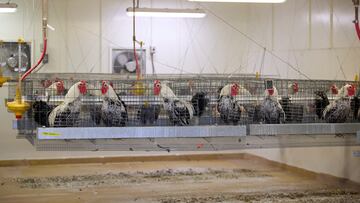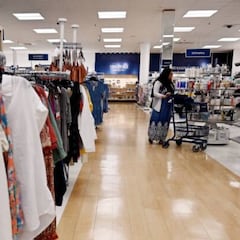Trade war against U.S. chicken? Europe rejects U.S. chlorinated chicken for these reasons
Health and animal welfare concerns fuel Europe’s continued ban on chlorine-washed poultry despite U.S. trade pressures.


Trade tensions between the US and the European Union remain high, as President Donald Trump continues to talk tough on tariffs, despite pausing what he called a ‘reciprocal tariff’ of 20% on the European economic bloc’s imports to the US. (Note: the ‘reciprocal tariff’ is no such thing – it is based on the trade deficit in goods the US has with the EU.)
One major point of contention is the longstanding issue of chlorinated chicken. The EU and the UK (which left the EU in 2020 after Brexit) both have bans in place on the import of US poultry treated with chlorine, citing health risks to consumers and animal welfare concerns.
The White House has criticized these restrictions, calling them “non-science-based standards” that limit US exports of “high-quality beef and poultry products.”
What is chlorinated chicken?
Chlorinated chicken refers to poultry that has been washed or dipped in chlorine-based solutions to eliminate harmful bacteria such as Salmonella and E. coli. While the US Food and Drug Administration and Department of Agriculture consider this practice safe, European regulators have taken a more cautious approach. The EU banned chlorine-washed chicken in 1997, emphasizing the need to maintain high hygiene standards throughout the production process rather than relying on chemical treatments at the end.
In the US, processors are not required to disclose whether their chicken has been chemically washed, creating a transparency gap between American and European standards.
What are the risks of chlorinated chicken
The European Food Safety Authority (EFSA) has identified potential risks associated with chlorate, a byproduct of chlorine washing, particularly for children with mild or moderate iodine deficiency. Chronic exposure can inhibit iodine uptake, affecting thyroid function, while acute exposure may impair the blood’s ability to absorb oxygen, posing risks to kidney health.
Critics also warn that reliance on chlorine washing may encourage poor hygiene earlier in the supply chain. A 2014 Consumer Reports study found that 97% of 300 US chicken breasts contained Salmonella, E. coli, or Campylobacter, with nearly half carrying antibiotic-resistant bacteria.
Global acceptance of chlorinated chicken
Global attitudes toward chlorinated chicken vary. The EU, UK, and Russia maintain bans, while countries like Canada and Mexico allow such imports under specific regulations.
Despite US pressure, European governments remain firm. UK Business Secretary Jonathan Reynolds recently stated that the country will “never change” its food standards as part of trade talks.
Get your game on! Whether you’re into NFL touchdowns, NBA buzzer-beaters, world-class soccer goals, or MLB home runs, our app has it all.
Dive into live coverage, expert insights, breaking news, exclusive videos, and more – plus, stay updated on the latest in current affairs and entertainment. Download now for all-access coverage, right at your fingertips – anytime, anywhere.


Complete your personal details to comment
Your opinion will be published with first and last names